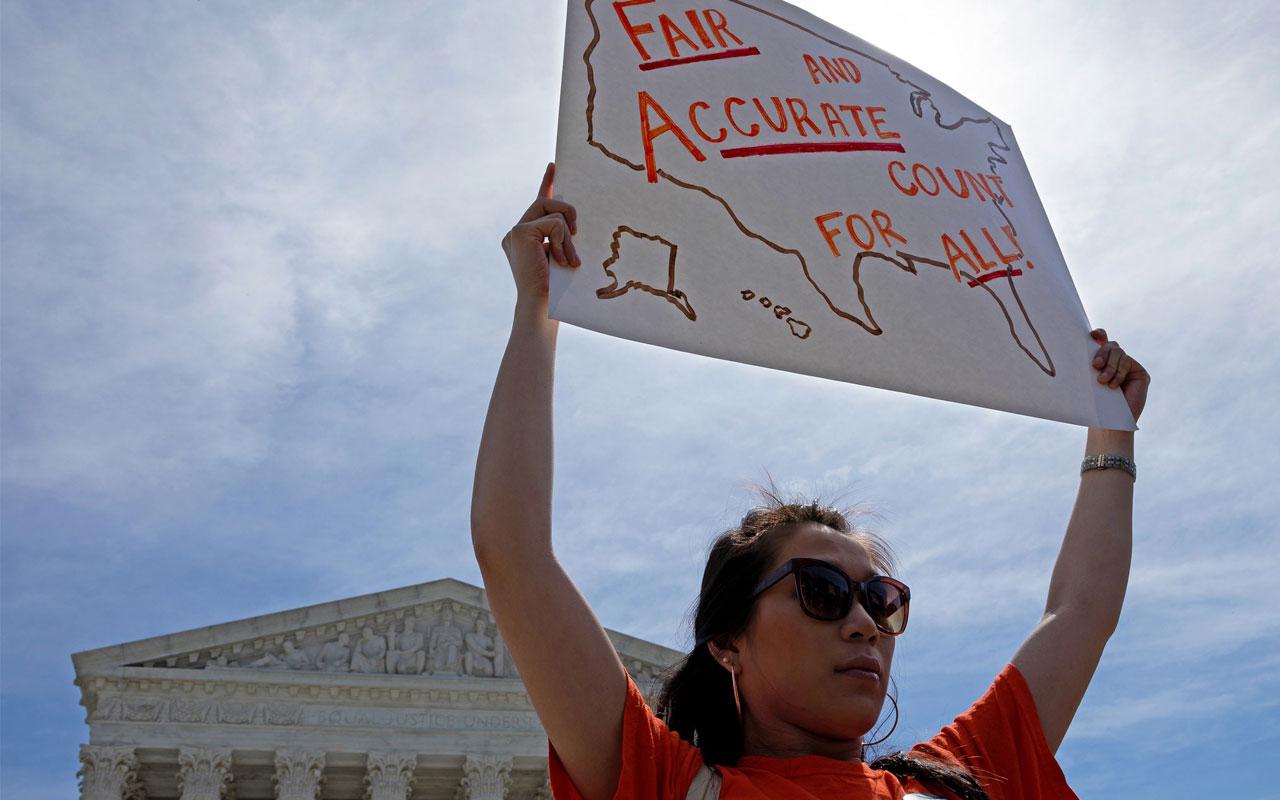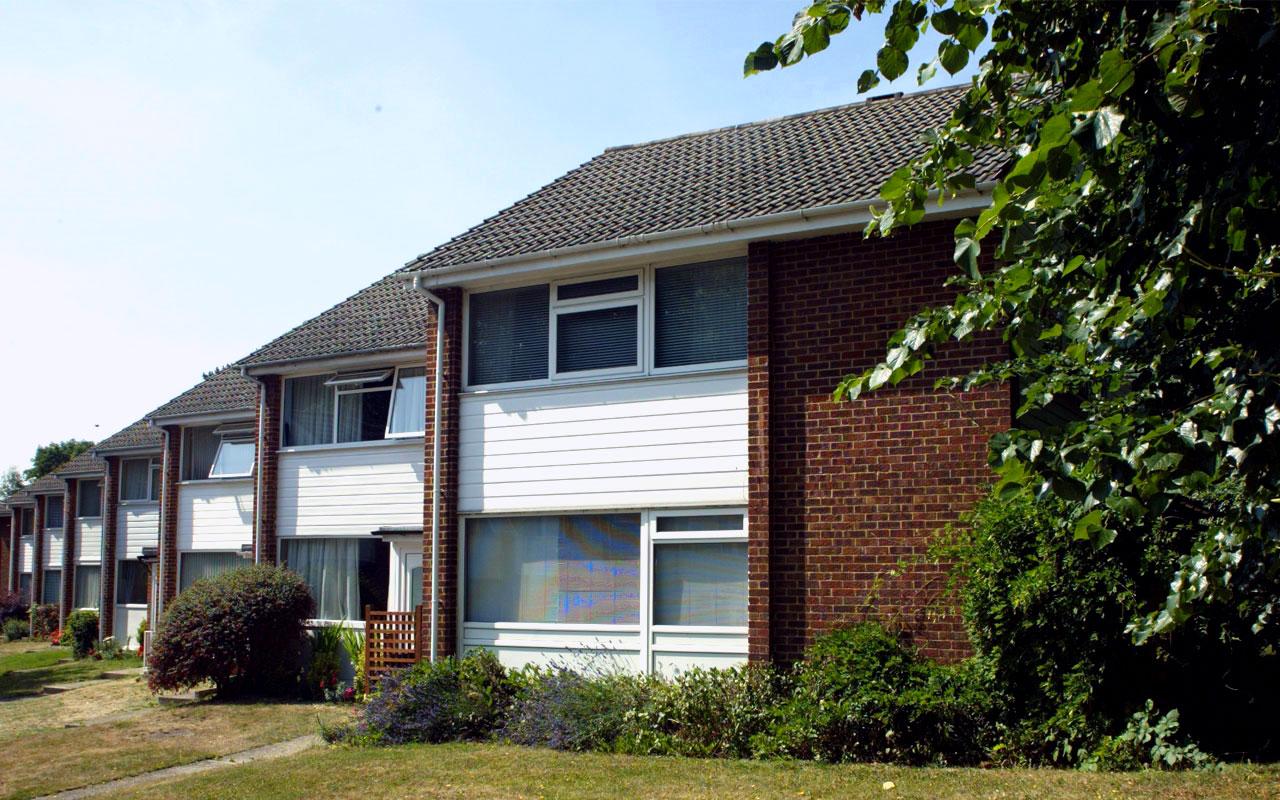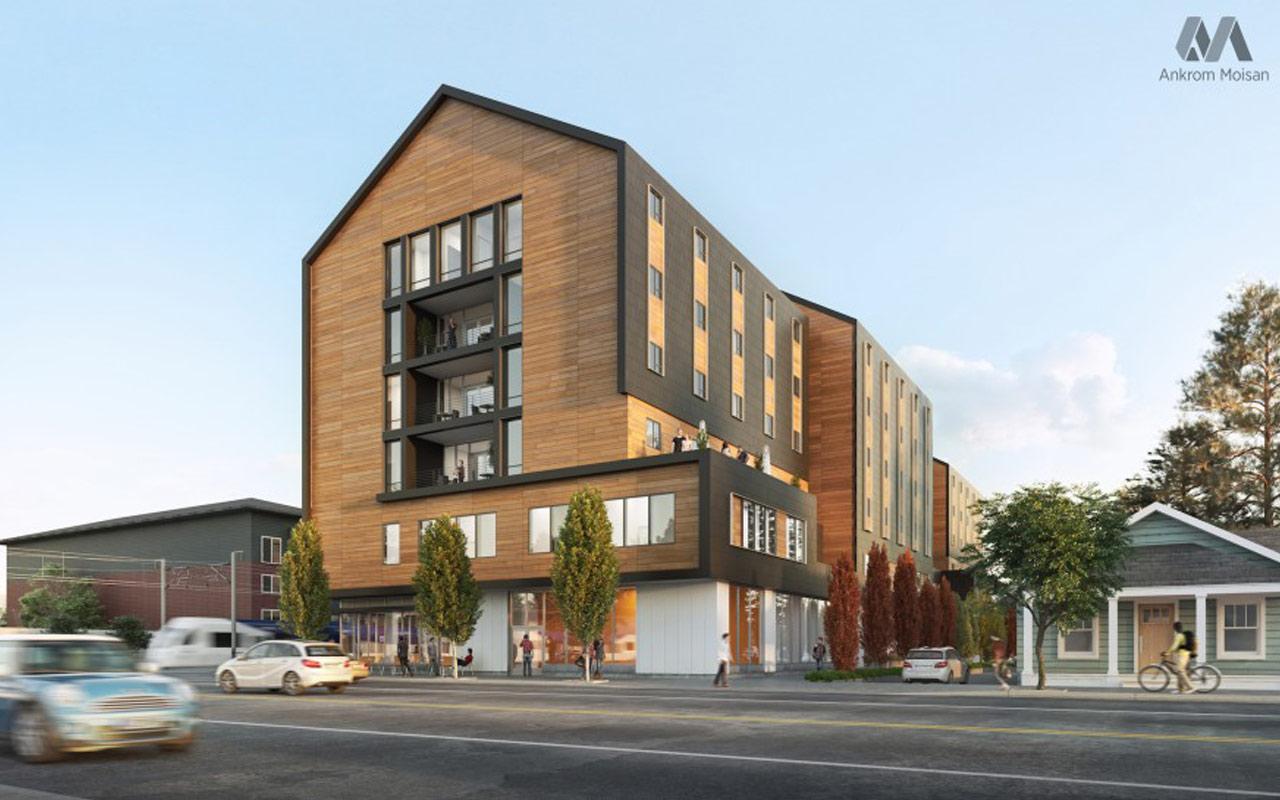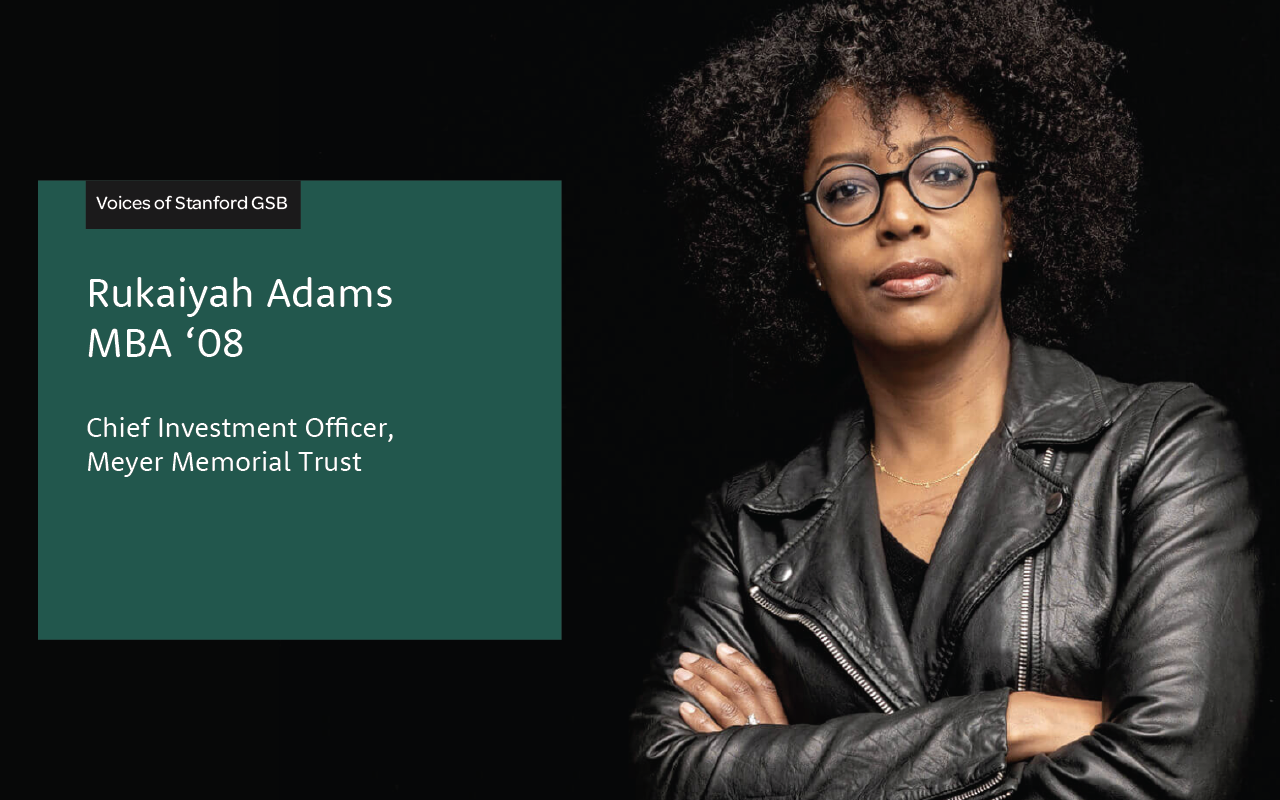Oregon’s housing advocates aim high
When it comes to affordable housing issues, the legislative session that just wrapped up in Salem was one of the most momentous ever. Advocates won major victories around additional state funding, tenant protections, preservation, attention to manufactured housing and more flexible zoning that will help create more housing choice in desirable neighborhoods across the state. So much important work happened we can barely keep track of it, but our friends at the Oregon Housing Alliance have put together a handy summary here.
It may have been tempting in the past for philanthropic funders to shy away from advocacy, worrying that involvement in “political” work could compromise their moral authority or broader influence in the community somehow. More and more, we all realize that that kind of hesitation marks a huge missed opportunity. Meyer’s housing work has become increasingly engaged in the past few years with supporting advocacy, simply because that’s the path to real impact on the housing issues facing Oregonians. If we want to make a real difference in affordable housing (or the other core issues that define Meyer’s agenda and mission), we need to help build a broader constituency and inform public discussions and decisions that shape how cities, counties and the state address those issues. A Meyer grant may be important to the success of a particular housing project or service program supporting housing, but addressing the issues we care about at scale requires shifting public investments and public policy.
We can’t take credit for the big wins in Salem (or in city halls and county offices around the state), but we’re proud to support grassroots advocates, nonprofit leaders, policy experts and journalists who are building momentum, mobilizing people and crafting effective messaging around affordable housing.
This spring, we released our fourth Request for Proposals specifically to support housing advocacy work, inviting proposals for up to two years, with eligibility broadly defined to include projects that expand the number and diversity of voices engaged in housing advocacy and promote concrete policy and systems changes at both the local and statewide levels. Reflecting the high level of interest and activity around the state, we received 40 proposals — more than any previous housing-focused RFP! We are excited to share the results: 11 new grants totaling $1 million over the next two years:
Better Housing Together $80,000 (Lane County)
For a two year initiative to enlarge and increase the effectiveness of BHT’s growing cross-sector coalition to advocate for stronger pro-affordable housing policies and resources in Eugene, Springfield and the rest of Lane County.
Farmworker Housing Development Corporation $73,448 (Linn, Marion and Polk counties)
To support the Rural Development Housing Advocacy and Communications (RDHAC) initiative over two years, educating community leaders about the need for and contribution of affordable housing in the mid-Willamette Valley, building a stronger and more durable constituency to support more affordable housing development.
Business for a Better Portland $76,750 (Portland Metro)
To activate business voices to support housing diversity, mobilizing and amplifying the voices of progressive business owners around affordable housing issues in and around Portland.
Human Solutions $134,800 (Portland Metro)
For a two year collaborative, in partnership with Northwest Housing Alternatives and REACH CDC, mobilizing and supporting tenants of publicly subsidized affordable housing in East Portland to advocate for themselves and for affordable housing broadly. This work will complement and support a broader statewide effort led by the Housing Alliance to engage affordable housing residents.
Oregon Center for Public Policy $150,000 (Statewide)
To support equitable reform of Oregon’s biggest housing subsidy over two years for policy analysis and education concerning the state’s tax deduction for mortgage interest. OCPP will lead an experienced and savvy coalition of advocates to continue a focused, strategic plan for reform that could redirect unprecedented resources to affordable housing in Oregon.
OPAL $80,000 (Portland Metro)
To advance the movement for housing justice and develop leaders in low-income communities of color in East Portland and East Multnomah County and to expand OPAL’s housing justice work in Clackamas and Washington counties.
Q Housing Project $80,000 (Portland Metro)
To launch a two year initiative engaging the LGBTQ+ community in the Portland Metro area around specific unmet housing needs and development of a clear vision and action plan around LGBTQ+ friendly housing for youth, elders and families.
Street Roots $80,000 (Statewide)
To support Housing: The Next Generation, a news series reporting in-depth statistics and information related to the daunting housing situations confronting younger people in Oregon, utilizing a strong equity lens specifically calling attention to homeless youth, Native American youth, youth aging out of foster care and youth trapped in cycles of generational poverty.
Unite Oregon $85,000 (Washington County)
To support Washington County Equitable Housing Coalition, a partnership including HomePlate Youth Services (HPYS) and Community Housing Fund (CHF), to advance an equitable housing agenda that amplifies and incorporates the voices of immigrants, refugees, communities of color and youth into key housing policy discussions taking place over the next two years in Washington County.
Urban League of Portland $80,000 (Statewide)
To lead a statewide campaign to bring tenant screening policies into compliance with Fair Housing law to enable greater access to rental housing for African Americans and people of color living in Oregon.
Welcome Home Coalition Housing First Public Advocacy (Portland Metro)
$80,000 over two years to inform and influence the region’s push to reduce homelessness and expand the availability of permanent supportive housing (PSH), by centering the experience of people with lived experience in PSH.
We hope you’re as excited about this list as we are! And as impressive as that list is, it doesn’t show ongoing Meyer support for other key partners like the Oregon Housing Alliance, Community Alliance of Tenants, and Housing Oregon.
Hopefully too this reassures anyone who wondered about how the transition that essentially folded Meyer’s Affordable Housing Initiative into the Housing Opportunities portfolio would affect Meyer’s commitment to support systems-level change and grassroots mobilization around housing issues. We see housing advocacy as a high priority and already look forward to the next million dollars worth of grants.
— Michael
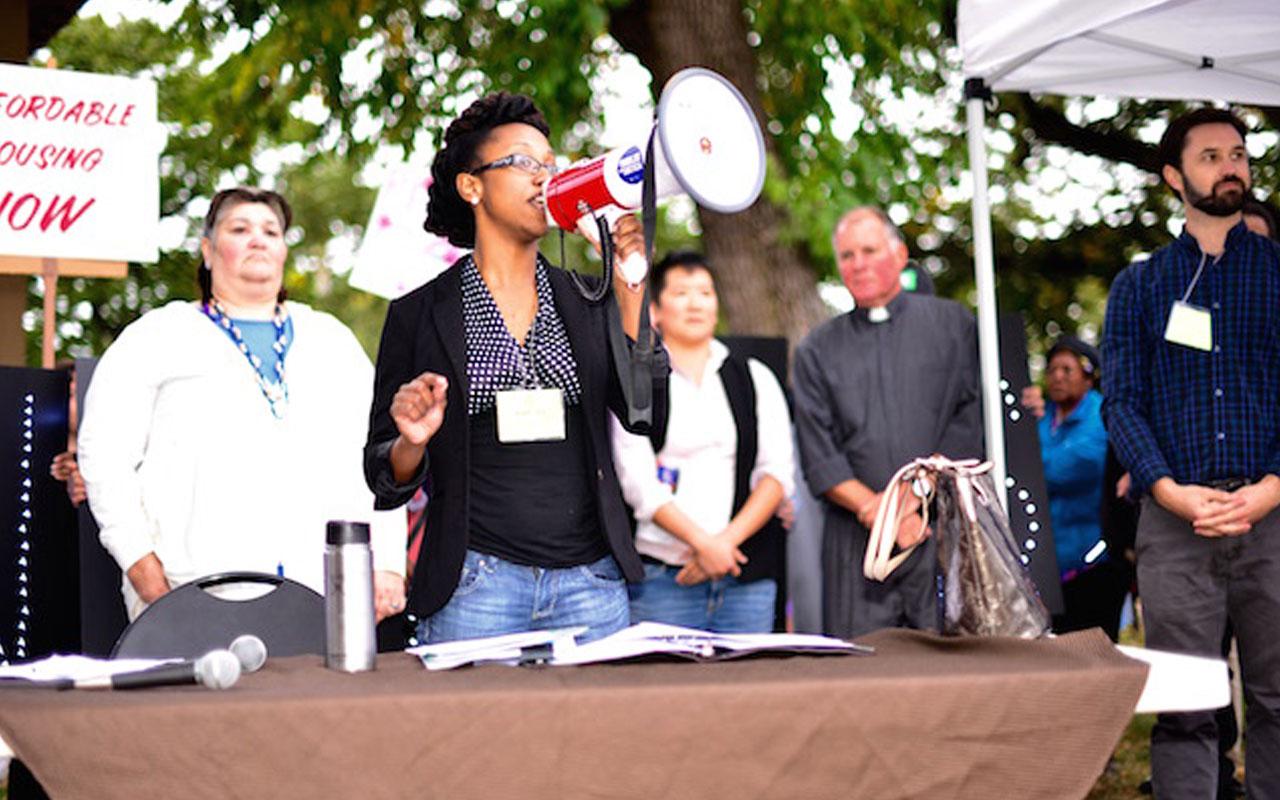
Katrina Holland, executive director of Community Alliance of Tenants, speaks at a 2016 rally for tenants’ rights. Behind her, from left to right, are Jeri Jimenez, D. Pei Wu, Pastor Mark Knutson and Justin Buri.




